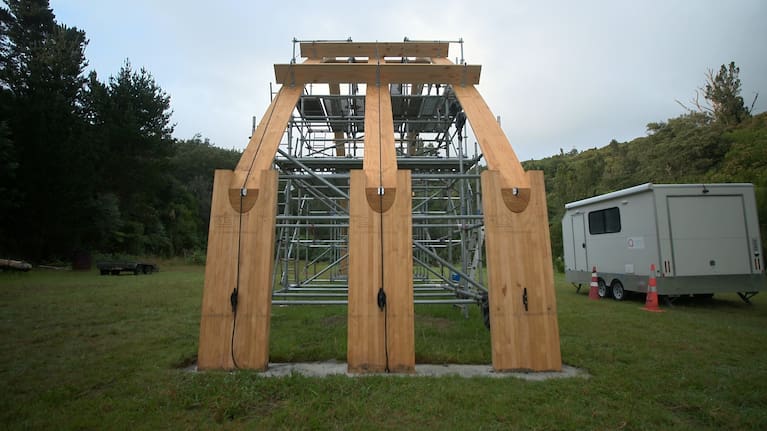Aotearoa has a housing crisis. It’s a problem we've been grappling with for decades with successive governments trying to fix it but largely failing.
Now, an award-winning architect is bringing his knowledge from London's housing crisis to New Zealand, saying a new type of rental model is the key to increased housing affordability and quality.
Award-winning architect and researcher Dr Anthony Hoete (Ngāti Awa, Ngāti Rānana) spent three decades practising abroad, but recently moved home to take up a professorship at the University of Auckland.
Speaking to TVNZ's SUNDAY, Hoete said his last project before leaving London was one of his most important, and most risky.
"I could have gone bankrupt," he said.
In London, Hoete was frustrated by the gap between his designs and what was ultimately produced by developers.
"The housing crisis meant quite poor-quality housing in London. Some developers were cutting costs during the build to quickly make a profit.
"I think having that New Zealand DIY attitude, I thought I might as well set up my own development company so I could oversee the process."
He invested all his money in a South London plot of land and successfully led the design, development, and construction of a unique set of townhouses called Costa Street.
“Because I was the developer, I could decide how we spent the money, and we definitely spent it on things like decent windows, insulation and fixtures," he said.

Another key difference of Costa Street was the lack of incentive to build quickly and cheaply because Hoete plans to permanently rent the properties, saying a build-to-rent model encourages better quality housing and long-term investment.
"We are setting out higher standards for the quality of affordable housing and I'm going to apply these lessons in Aotearoa New Zealand," he said.
As well as rethinking the future of housing through modern knowledge, Hoete is diving deep into the past to unearth lessons from his ancestors.
Hoete and a team from the University of Auckland recently unveiled a full-scale structure using an endangered Māori construction technique called mīmiro.

Using interlocking supports and tensioned rope lashing, mīmiro was used by Māori as early as the 1700s.
After building the prototype near Ōpōtiki in the Eastern Bay of Plenty, Hoete's team tested mīmiro against earthquake requirements for modern buildings, proving its ability to withstand powerful vertical and lateral force.
"What it means in terms of future construction and technology is mind-boggling," he says.
"We're talking about its application in terms of anything from supermarkets to retail spaces. It's good seeing how this traditional knowledge could manifest in new ways that we haven’t even thought about.
"I'm not trying to preserve the past. My job I think is to transform it."


















SHARE ME